Aplysia vaccaria, the largest slug in the world
Categories: Animals | North America | World
By Pictolic https://pictolic.com/article/aplysia-vaccaria-the-largest-slug-in-the-world.htmlIt is a formless, slimy creature, black in color, resembling rather a character from a science fiction movie. It actually lives on our planet and demonstrates the wild imagination of our mother nature.
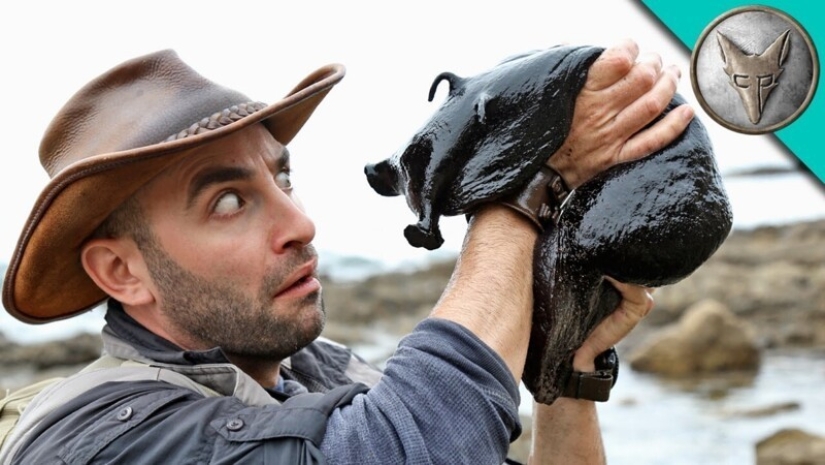
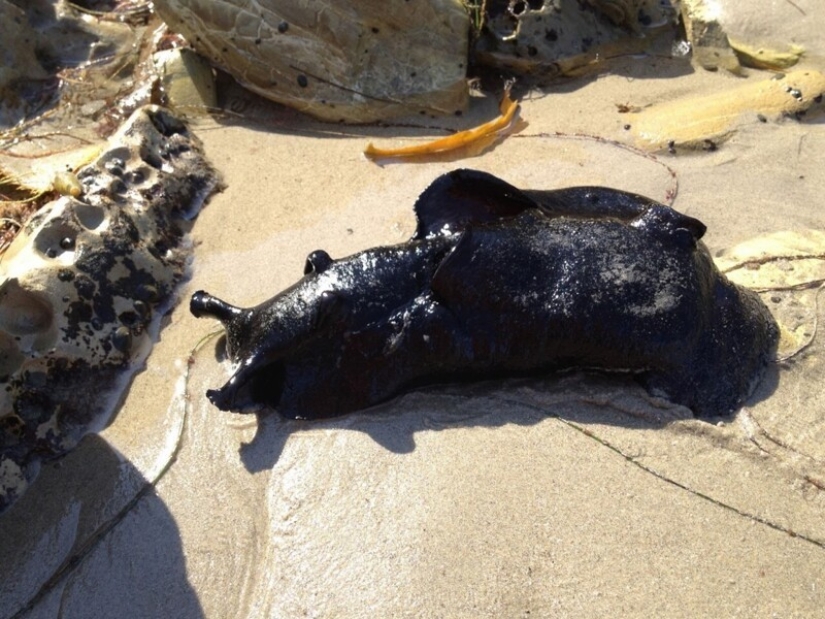
Who is it? Aplysia vaccaria, the largest slug in the world. Its other names — "black sea hare" or "Californian Bunny". Why California? Because these black clams giants live only near to California and in the Gulf of California.
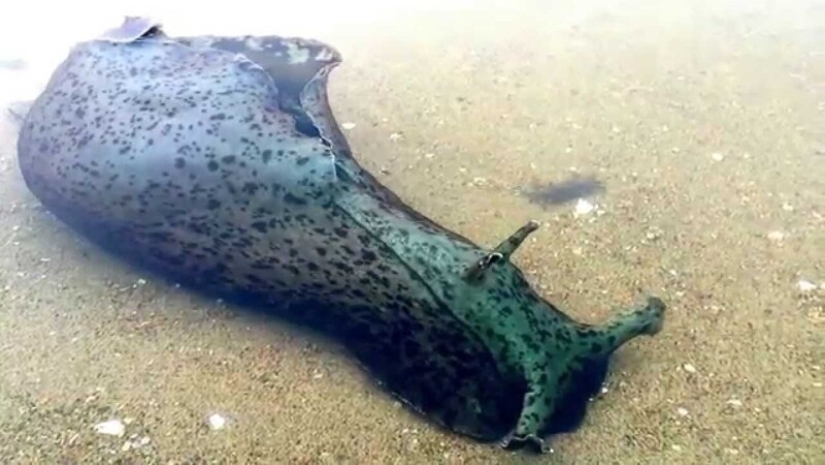
The above-mentioned "bunnies" can reach an impressive size — the largest discovered people instance had a length of 99 cm and weighed 14 kg! In shallow water the clams are released for oviposition, so meeting with them — a rarity.
Long known that living at the bottom of tropical seas Aplysia, or sea hares protected from predators released into the water mixture of purple ink and white matter, opaline. However, exactly how losing helps the clams to cope with the enemy became clear only recently. It turns out that this substance denies the enemy the opportunity to feel a sea hare and, consequently, causes him to lose appetite.
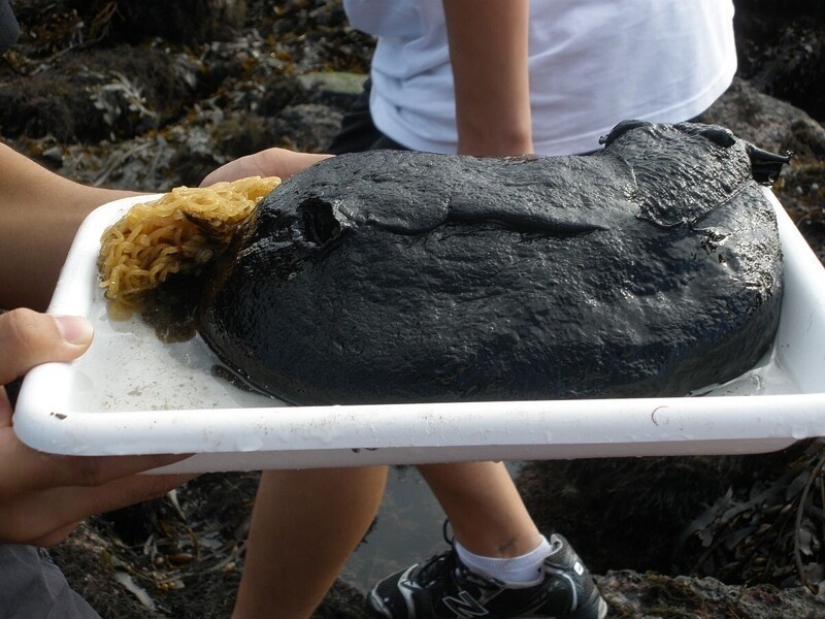
Sea hares have many protective mechanisms, each of which is applied depending on the situation. The secretion of ink and opaline molluscum is used only in extreme cases when the predator is already biting him.
It is a viscous substance released into the water, cover the enemy and makes it inactive neurons that detect odors and are responsible for the transmission of signals from the brain to the muscles. In the end, the predator will be a long time to clean themselves from the sticky substance and will have time to lose their appetite, and the clam will disappear.
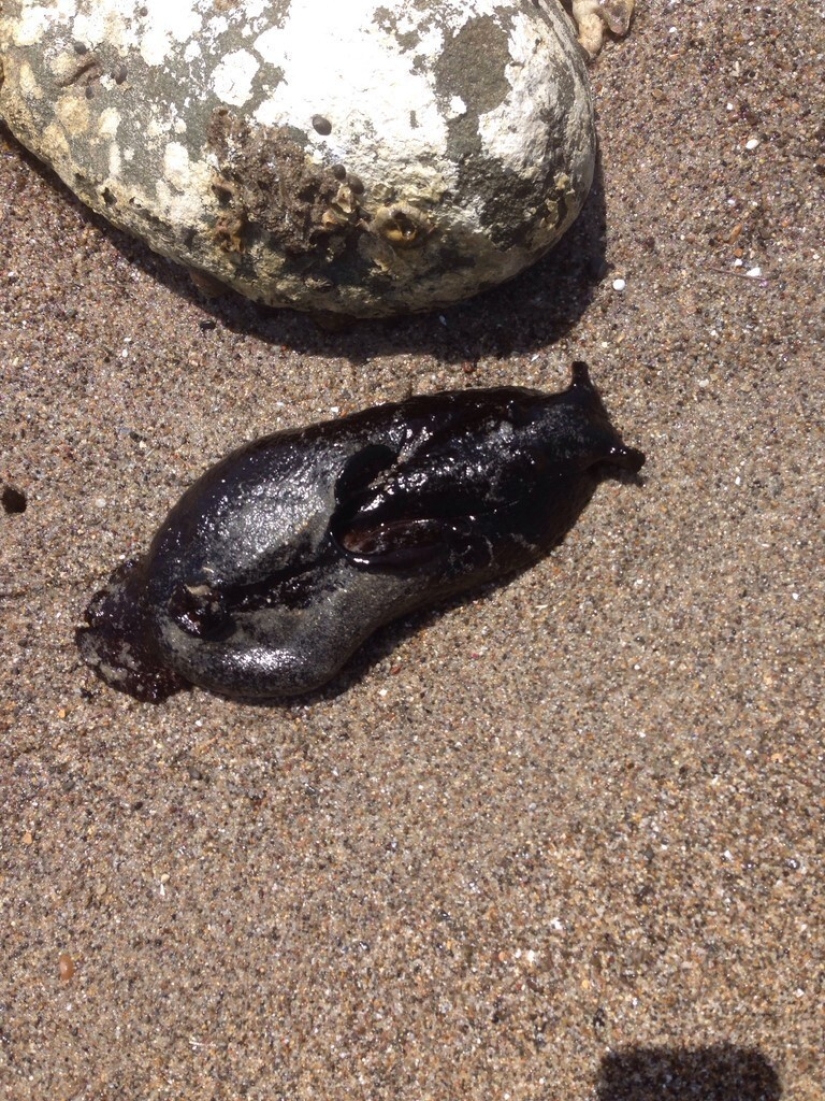
Besides the ability to emit a substance priceplay smell the enemy, the sea hares there are several ways to use their ink as a defense. For example, a high concentration of amino acids in ink makes them very appetizing for some predators, allowing the mollusk to distract enemies from yourself.
Also to get rid of the attacking predator helps the pigment appliciation, which gives a poisonous purple color the ink of a mollusk. This diversity of protective mechanisms due to the fact that some of them affect some predators, but is completely harmless to other and Vice versa.
Aplysia californica has become a valuable laboratory animal, used in research of neurobiology of learning and memory, particularly associated with the work of Nobel laureate Eric Kandel. Its ubiquity in synaptic plasticity studies can be attributed to its simple nervous system, consisting of just 20 000 large, easy certain neurons with cell bodies up to 1 mm in size.
Despite her simple nervous system, however, Aplysia californica is able to multiple task nonassociative and associative learning, including increased sensitivity, addictive, and classic, and the creation of conditions operant.
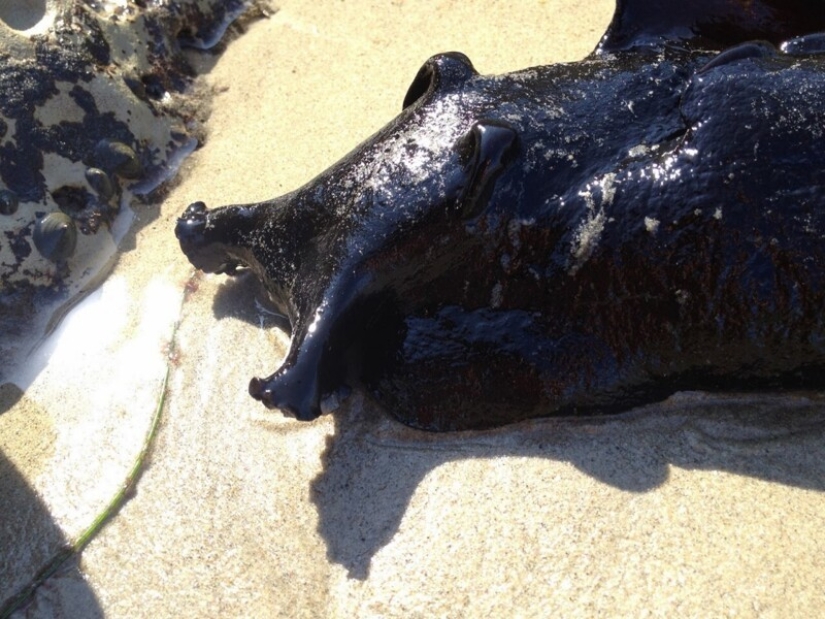
To see this animal lucky Americans Coyote Peterson and Aaron Sanchez. The young people wandered along the coast near Los Angeles, affected by the tides, and quite by accident noticed a small body of water unusual living creature — it was a black sea hare.
They found the instance was of medium size — about 60 cm and weighed just under 5 kg.
Keywords: Meeting | Surprise | Underwater inhabitants | The largest
Post News ArticleRecent articles

Sometimes you see a tattoo on a person and think: "Why did he do it at all?". A familiar feeling? If you have never experienced it, ...

Taxi ride like a lottery — you never know if you will pull the winning ticket. Even the official services like Uber does not ...
Related articles

In anticipation of the most busy surprises holiday of the year for many is the question — as a beautiful and original way to ...

Choosing a gift for a birthday or any other significant date can be excruciatingly difficult. But there are always classic options ...

Probably everyone of us have encountered jellyfish while relax in seaside resorts, and usually meeting with these underwater ...

Finnish photographer Juha Tanhua has shot an unusual series of "space photos". Astrophotographic images of stars, galaxies and ...